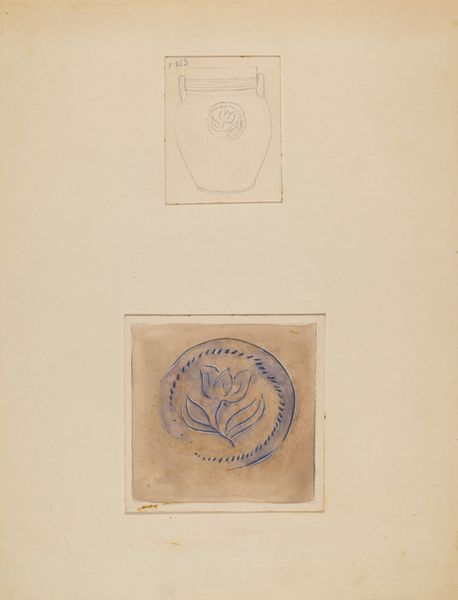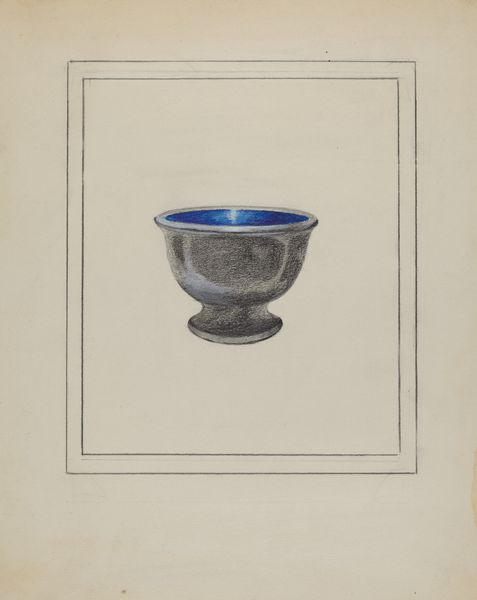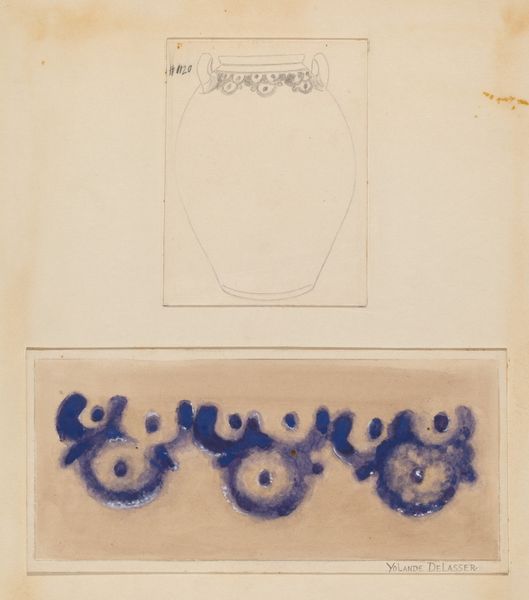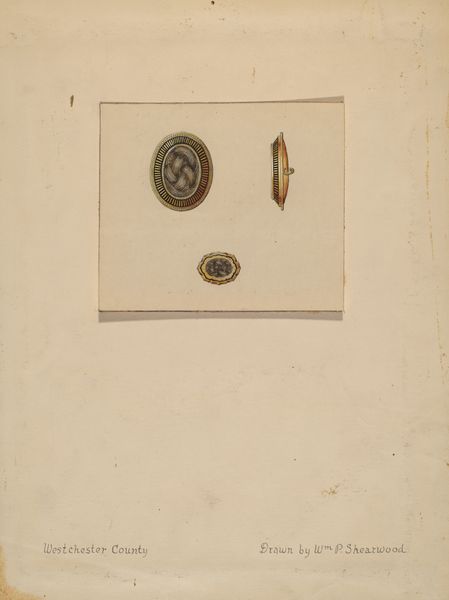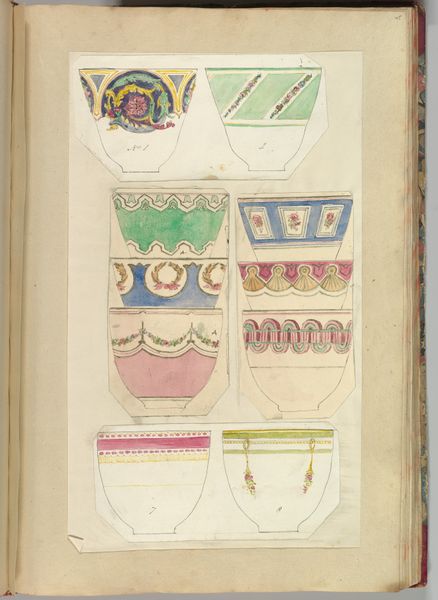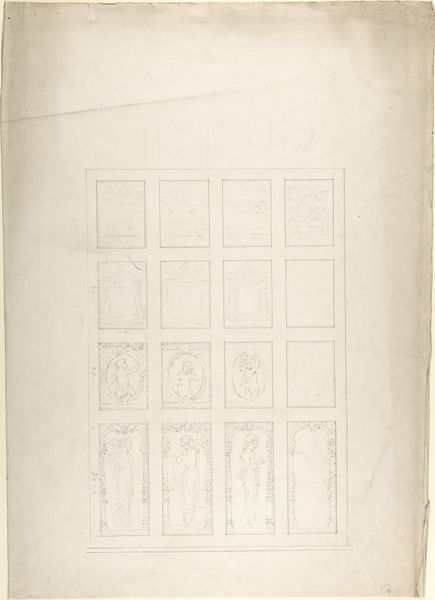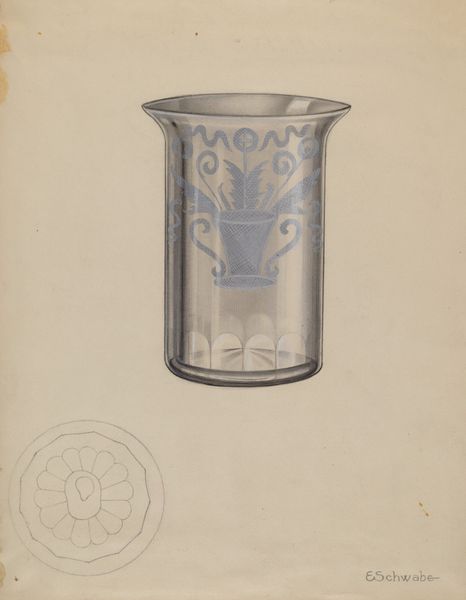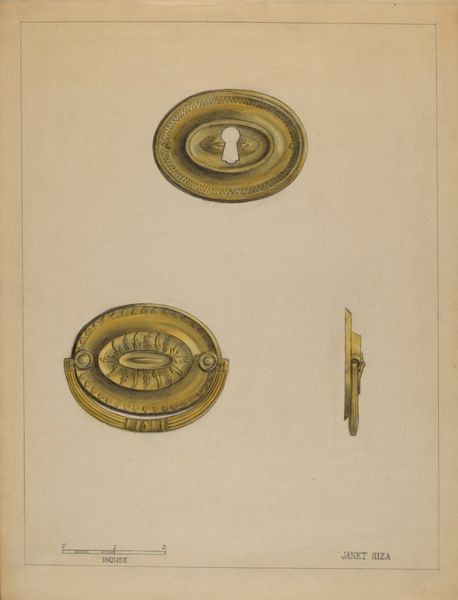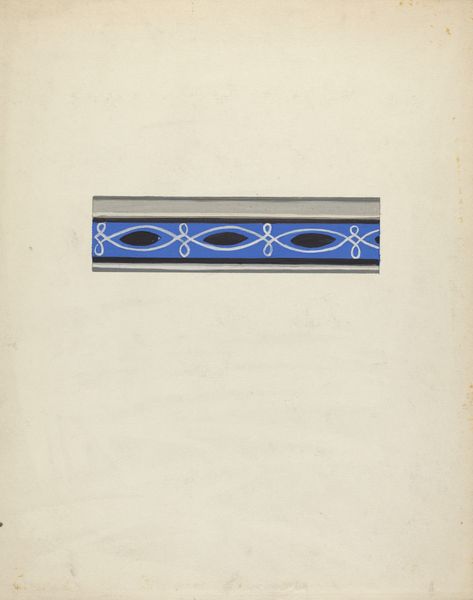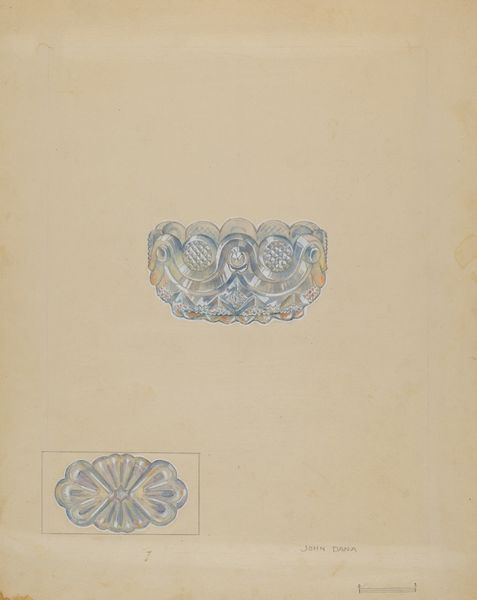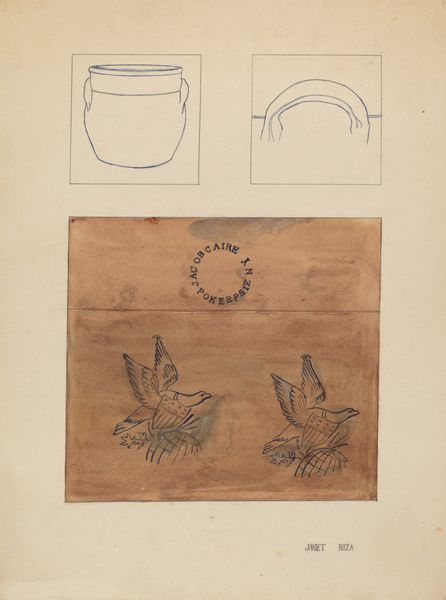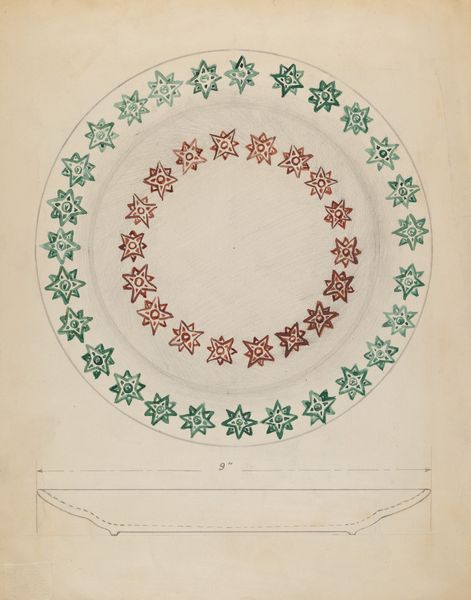
drawing, watercolor
#
drawing
#
watercolor
Dimensions: overall: 29 x 22.3 cm (11 7/16 x 8 3/4 in.) Original IAD Object: 8 1/2" HIgh 4" Dia(top) 5" Dia(base)
Copyright: National Gallery of Art: CC0 1.0
Curator: Welcome. We're standing before Yolande Delasser's watercolor and drawing, titled "Jar," created around 1938. What strikes you first about it? Editor: Well, a childlike quality comes to mind. The composition is unusual; we have a simple jar form hovering above what seems to be a sequence of dark-blue semi-circles. It feels rudimentary, almost like a practice sketch. Curator: I agree about the simplicity. Consider the application of watercolor wash here. Observe how the color serves the basic outlines and contours—effectively delineating shapes. And the way the jar form is floated atop the sheet; do you find it affecting the composition and balance? Editor: I do. It brings a symbolic, dreamlike quality into view, evoking ideas about containers, sustenance, and cultural memory. We also should not miss that jar form containing the text "Commipaws." Curator: A phonetic spelling it appears of "Come Pass" - interesting because the jar and those repeated arches, these could reference a game, a local landmark, or even the echo of repeated cultural memories, but without more specific documentation, all we can do is interpret based on the formal composition before us. It appears, these choices create a certain feeling of ambiguity, where the relationship between text and form is loose. Editor: Precisely. Perhaps Delasser is commenting on how easily meanings can shift when cultural referents become untethered from their source. These circular arches could represent architectural remnants of that locality - something like the arches over bridges or tunnels? That semiotic play can trigger emotional responses across different groups. It appears we're viewing images which represent something meaningful for her which may no longer hold the same cultural significance or memories for us, thus, "untethered." Curator: I appreciate how your interpretation focuses on this evocative element of cultural connection, while acknowledging its ephemeral and tenuous nature, too. I am taken with the use of that stark contrast to bring to focus basic form versus cultural forms which is not as directly obvious, perhaps even dying. Editor: Thank you. Ultimately, this modest watercolor reminds me of the fragile link between personal and shared understanding in representation. Curator: Indeed. It highlights how signs operate both in isolation and in relation to broader socio-historical contexts.
Comments
No comments
Be the first to comment and join the conversation on the ultimate creative platform.
